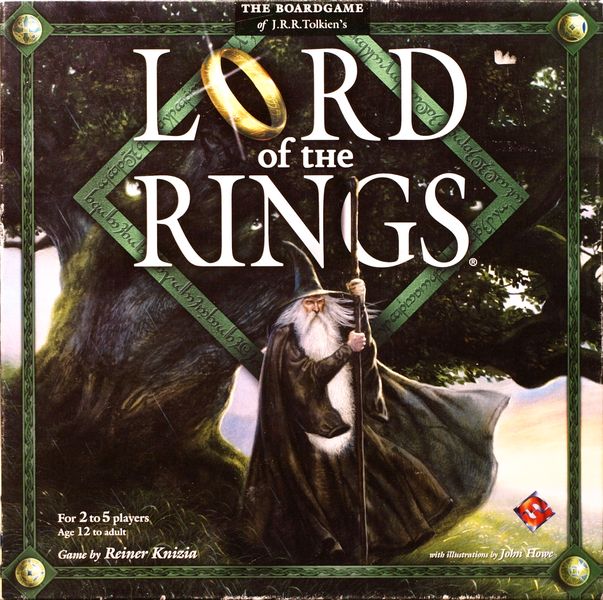The Lord of the Rings (2000) Board Game
The Lord of the Rings Board Game, released in 2000, is based on J.R.R. Tolkien’s epic fantasy novel of the same name. Designed by Reiner Knizia and published by Fantasy Flight Games, the game allows players to embark on a cooperative adventure set in Middle-earth.
Game Components of The Lord of the Rings
How To Setup The Lord of the Rings
To set up the game, start by assembling the Master Board, which shows the journey from Bag End to Mordor. Each player selects a hobbit character (Sam, Frodo, Merry, Pippin, or Fatty) and receives Hobbit Cards. The One Ring is given to Frodo. Place the hobbit figures at the “0” mark on the corruption track and Sauron at “15” (or “12” or “10” for more challenging games). Each scenario board is introduced as players progress through the game.
Gameplay Mechanics and Game Objective
Player Experience
Playing The Lord of the Rings is an immersive experience that replicates the fellowship and cooperation essential to the story. Players must strategize together, using their unique hobbit abilities and managing resources carefully. The game builds tension as Sauron closes in, requiring players to make critical decisions and sacrifices to ensure the Ring’s destruction. The sense of community and teamwork is a key aspect, reflecting the unity and strength of the Fellowship in the books.
Pros
Cons
Personal Thoughts on The Lord of the Rings
This game is ideal for fans of cooperative board games and the Lord of the Rings series. It offers a challenging yet rewarding experience that emphasizes teamwork and strategy. For those new to cooperative games, it provides a classic and influential example of the genre. However, due to its complexity and length, it may not be the best choice for casual or younger players. Overall, it remains a gem in the world of board games, celebrating the spirit of fellowship and cooperation that defines Tolkien’s epic tale.
We are supported by our audience. When you purchase through links on our site, we may earn an affiliate commission, at no extra cost for you. Learn more.

